Lately, the competition between Bose and Sony has turned into a bloodbath. It used to be that no one could touch Bose in terms of noise-cancellation. But Sony has raised its game in that category, making the choice between their best noise-cancelling headphones a tough one. Which headphone better suits your taste and listening style? Let’s find out in this Bose QuietComfort 35 II vs Sony WH-1000X M3 Review.
Bose QuietComfort 35 II vs Sony WH-1000X M3 Review
FIT
I wouldn’t base your decision on this department. I found both headphones equally comfortable, and they both weigh about the same. And both headphones have a similar earpad circumference. But if you have a taste for luxury, you might prefer the more plush feel of WH-100X M3’s earpads. It’s like resting on your mother’s bosom.
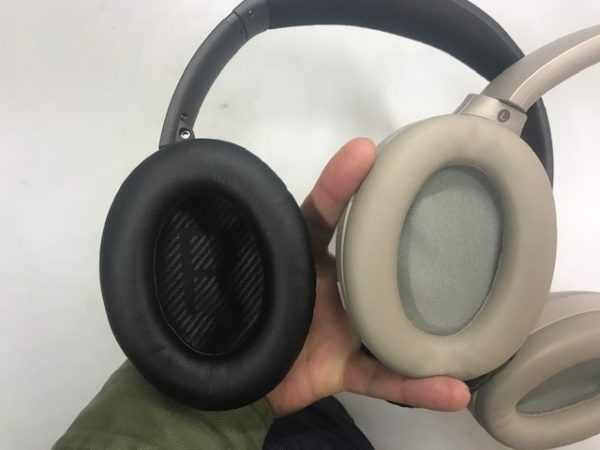
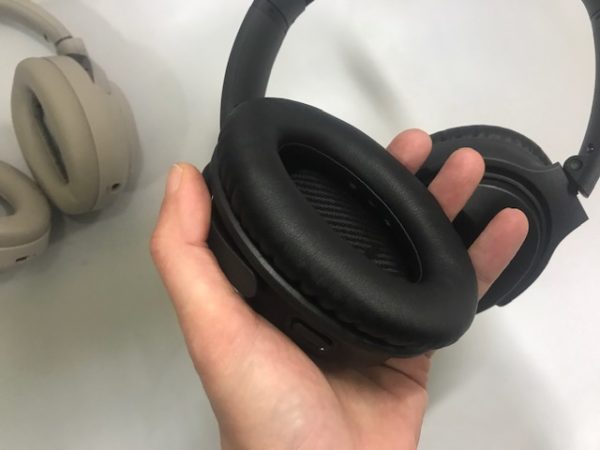
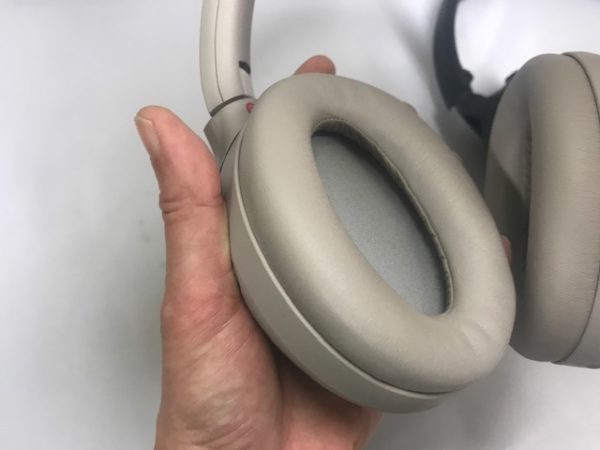
DESIGN
Battery
Sony is the winner here, offering 30 hours of battery life, which is 10 hours more than the QC 35 II. And if you buy and additional adapter, you can yield 5 hours of playtime with a 10 minute charge. Bose will give you 2.5 hours of usage after 15 minutes of charging.
Noise Cancellation
Close race here, but Sony offers just slightly more effective noise-cancellation.
Controls
If you love buttons or hate swiping, go for the no frills design of the Bose. Three simple buttons control play/pause, skip, volume and call activation. And a single button on the other ear cup lets you control noise-cancelling settings and activate your voice assistant. (Both headphones allow you to adjust the level of noise-cancellation). That being said, if you’re a sucker for functionality, the snazzy touchpads on the WH-100X M3 may be hard to resist. For example, if you’re on an airplane, and the steward is about to ask, “beef or chicken,” all you have to do is place your hand over the ear cup to pause the music and let in the sound of his voice. Still, the touchpads take a few minutes to get used to, and folks with little patience for technology may get their panties in a twist.
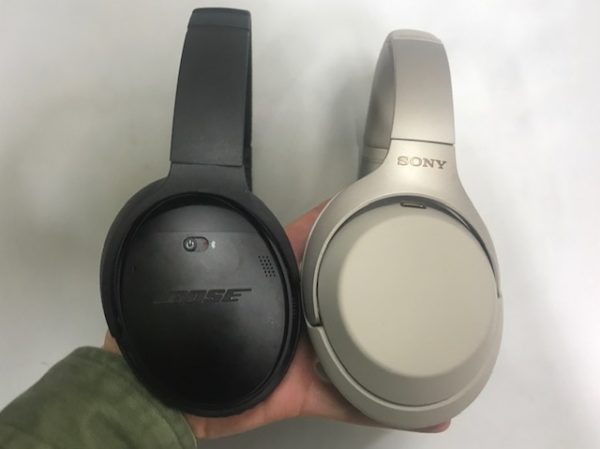
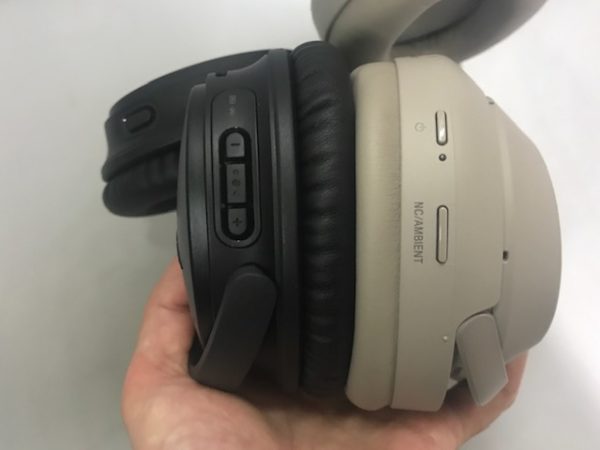
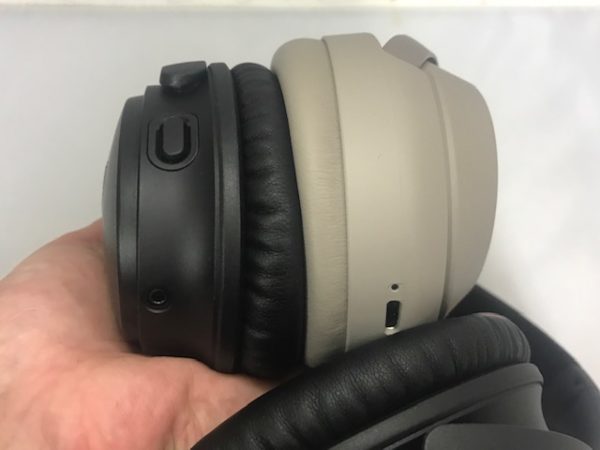
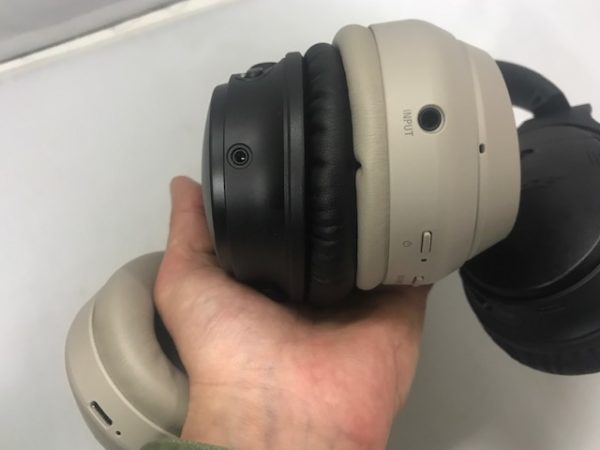
USB charging connection
The QC 35 II uses a micro-USB connection for charging, while the WH-1000X M3 employs a USB-C connection. USB-C is preferable because the connection is sturdier and you don’t need to bother flipping the cable the right way in order to connect it.
Extra Features
Now, if you’re not a fan of bass, the good news is that you can personalize your sound signature through Sony’s accompanying app. Bose has an app too, but it doesn’t have an equalizer.
Durability
Not sure. Sony was having some cracking headband issues on the older version, but that’s been fixed with the M3. And they both come with a 1-year warranty.
Aesthetics
I’ll let you make your own decision on which headphone looks better. But the Sony looks better. The QC 35 II makes me want to eat lunch in the library, while the Sony makes me want to strip off my clothes and twerk. Or drive Batman’s car. What are your plans for the day? Actually, if you spend an extra 50 bucks, you can customize the colors of your QC 35 II, and that will certainly give your some bling.
SOUND
Overall Impressions: Sony’s yuge bass and warmth vs Bose’s clarity and neutrality.
Lows
If you like your lows warm and fat, go for the WH-1000X M3. (When noise-cancellation is turned off, the bass becomes clearer and much more tempered). But if you prefer your bass to sound clean and more neutral, you’ll gravitate to the QC 32 II. Certainly, if you listen to a lot of classical or jazz, the QC 32 II will present more transparency with better separation between notes in this range. That being said, anyone with a taste for punchy bass in their pop music is sure to choose the WH-1000X M3 hands down. And if you like your music to sound rich and juicy, the low-end of the WH-1000X M3 is better suited as well.
Mids
Again, you’ll get two different personalities from the WH-1000X M3, depending on whether the noise-cancelling is on or off. (Your equalizer setting will obviously change your bass profile as well). When ANC is on, the bass frequencies can overwhelm the midrange, overshadowing the low-mids and reducing overall clarity. At the same time, the mids pretty even in this range, so you can expect tons of body when listening to rock and pop-rock. And vocals sit nicely within the mix, so you won’t experience and harshness in the upper mids.
Like the WH-1000X M3, the mids are pretty even on the Quietcomfort 35 II as well. But it’s a thinner sound with cleaner layering of instruments in heavy arrangements. If you’re a fan of folk, for example, you’ll enjoy the tidier separation in guitar strums on the QC 35 II. But if you appreciate a massive sounding rock chorus, the WH-100X M3 will provide that sound profile.
Highs
If your ears are sensitive to high frequencies, you’ll prefer the darker sound signature of the WH-1000X M3. But if you enjoy more sparkle in your highs, the QC 35 II is the way to go. You’ll also get more transparency in this range from the QC 35 II. Strings are cleaner with more texture and a more realistic tonality. So, again, if you mostly listen to jazz or classical music, the QC 35 II are your cans.
Soundstage
You’ll get a slightly more spacious soundstage on the QC 35 II, (though I didn’t play with the soundstage options on Sony’s app). And because the separation is superior on the QC 35 II, instruments placement feels a touch more precise as well.
SUMMARY
For a good time, go for the WH-1000X M3. For honesty, pick the QC 35 II. If you mainly listen to pop, hip-hop and rock, the WH-1000X M3 may be more fun. But if you listen to genres that mostly employ acoustic instruments, the QC 35 II will offer more precision.
You can find both of these cans for the best prices here:
Bose QuietComfort 35 II on Amazon

